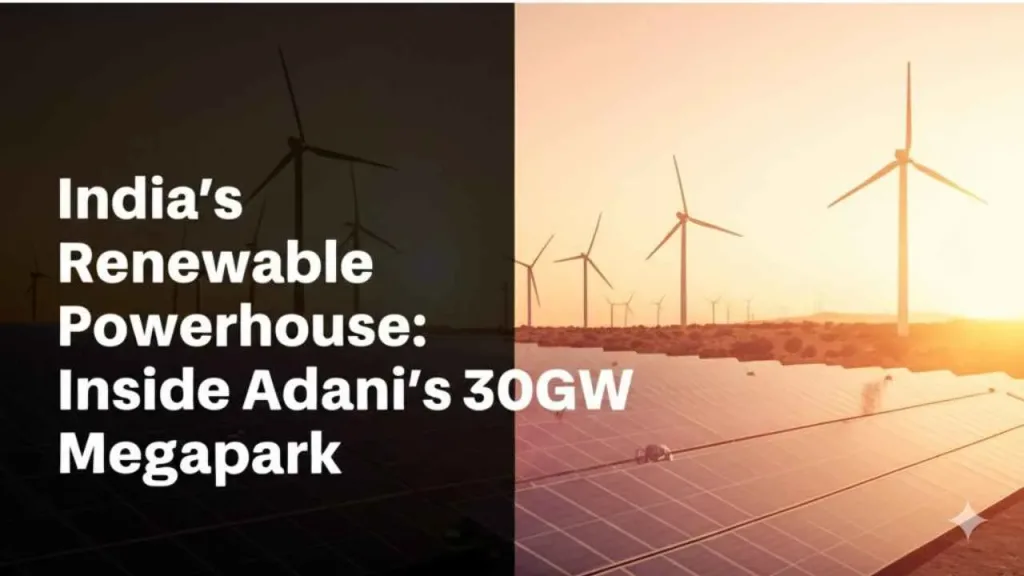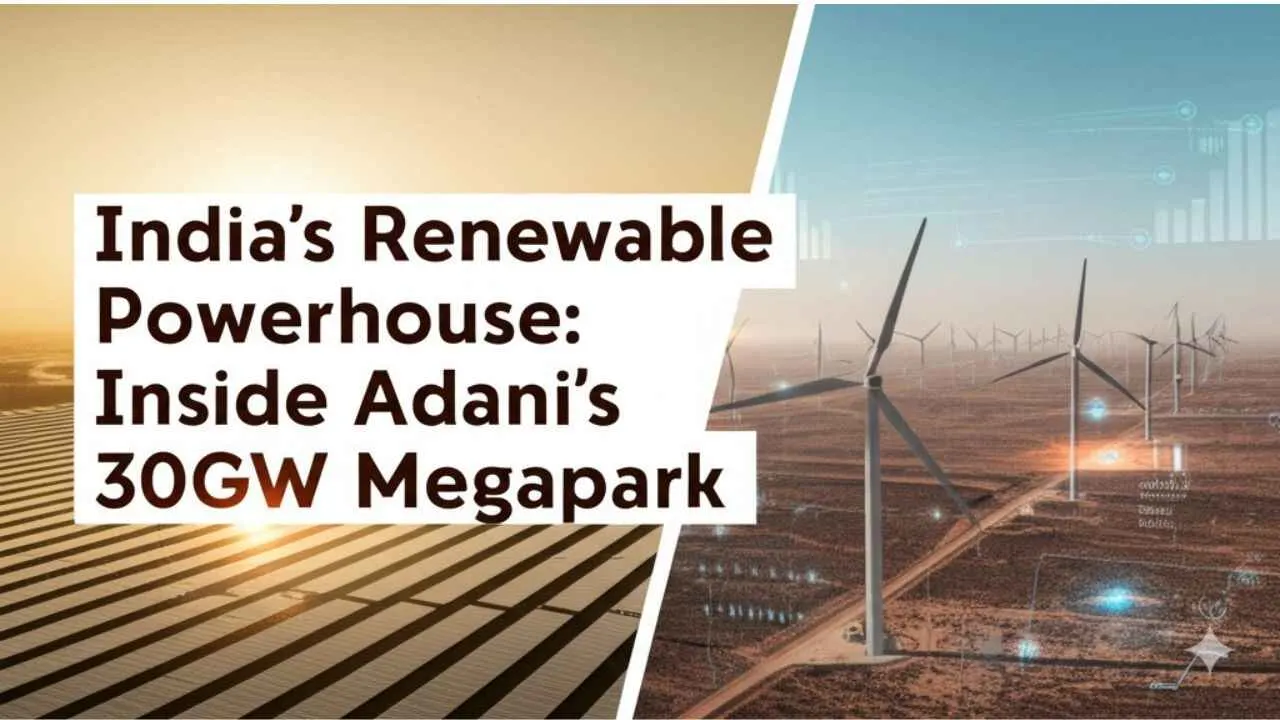In the remote salt plains of Khavda, Gujarat, a quiet but powerful transformation is taking place — one that may define India’s energy future. What was once barren, sun-cracked desert is now emerging as one of the largest renewable energy parks in the world, led by Adani Green Energy Limited (AGEL), the renewable energy arm of the Adani Group.
This is not just a power project. It’s a symbol of ambition, scale, and the future of energy in India.
A Vision as Vast as the Desert
Spanning an immense 538 square kilometers, the Khavda Renewable Energy Park is nearly five times the size of Paris and about as large as Mumbai. With a target capacity of 30 gigawatts (GW) — 26 GW from solar and 4 GW from wind — this hybrid power plant is poised to be a cornerstone in India’s renewable energy ambitions.
The project kicked off in April 2023, and in just two years, 5 GW of clean energy is already being evacuated to the national grid — a pace that sets new benchmarks for infrastructure execution in the sector.
Powering India’s Climate Goals
India has committed to producing 500 GW of renewable energy by 2030, and progress is well underway. With 220 GW already operational, AGEL aims to contribute 10% of this national target, with Khavda alone expected to deliver 30 GW — more than many countries’ entire energy capacity.
AGEL plans to add 4 to 5 GW of capacity every year, with the entire 30 GW expected to be commissioned by 2029.

Engineering the Impossible: Building on Salty Soil
Constructing massive wind turbines in Khavda’s harsh terrain isn’t a small feat. The land is marshy and salt-laden, with a shallow water table that complicates foundation work. Yet, AGEL’s engineers have met the challenge head-on.
Each 5.2 MW wind turbine stands nearly 200 meters tall — and to anchor them, builders dig 12-meter-deep pits and fill them with stone and concrete. These turbines are powerful enough to supply 8 to 10 villages with electricity each, demonstrating both scale and impact.
A Desert Blooms with Solar Panels and Innovation
By the time it’s complete, the park will house an estimated 60 million solar panels and 770 wind turbines. But the scale isn’t just in numbers — it’s in innovation, too.
To conserve water in this arid region, AGEL has deployed robotic, waterless cleaning systems for the solar panels. Over the life of the project, this technology is expected to save more than 1.72 billion litres of water — a critical sustainability measure in one of India’s driest zones.
High-Tech Monitoring and Smart Management
Energy generation is just one part of the puzzle. AGEL has established a state-of-the-art control center to monitor real-time performance across the vast site. From a single screen, engineers can track how each panel and turbine is functioning, how much energy is being generated, and where improvements are needed.
This level of centralized oversight helps maintain efficiency across the park — maximizing output and minimizing downtime.
Made in India: Local Manufacturing for Global Goals
AGEL is also investing heavily in India’s manufacturing capacity. Its solar panels are produced and assembled in Mundra, Gujarat, where the group is currently ramping up from 4 GW to 10 GW of annual production capacity. Wind turbines, too, are increasingly being sourced domestically, bolstering the government’s Atmanirbhar Bharat (self-reliant India) initiative.
Clean Power to the People
Most of the energy generated at Khavda will be sold to government agencies such as the Solar Energy Corporation of India (SECI) and NTPC through long-term Power Purchase Agreements (PPAs). Only 700 megawatts will be retained for the company’s own use, with the rest funneled into India’s growing green grid.
This project is more than a business venture — it’s a national service, bringing clean power to millions and helping reduce India’s carbon footprint.

From Wasteland to Powerhouse
The Khavda project exemplifies how innovative thinking, engineering excellence, and climate ambition can turn a desolate stretch of land into a global energy beacon. As India marches toward its 2030 climate commitments, Khavda will remain a shining — and spinning — symbol of what’s possible.
And as the sun rises and wind blows across these vast plains, the turbines and solar panels don’t just generate electricity — they generate hope.
